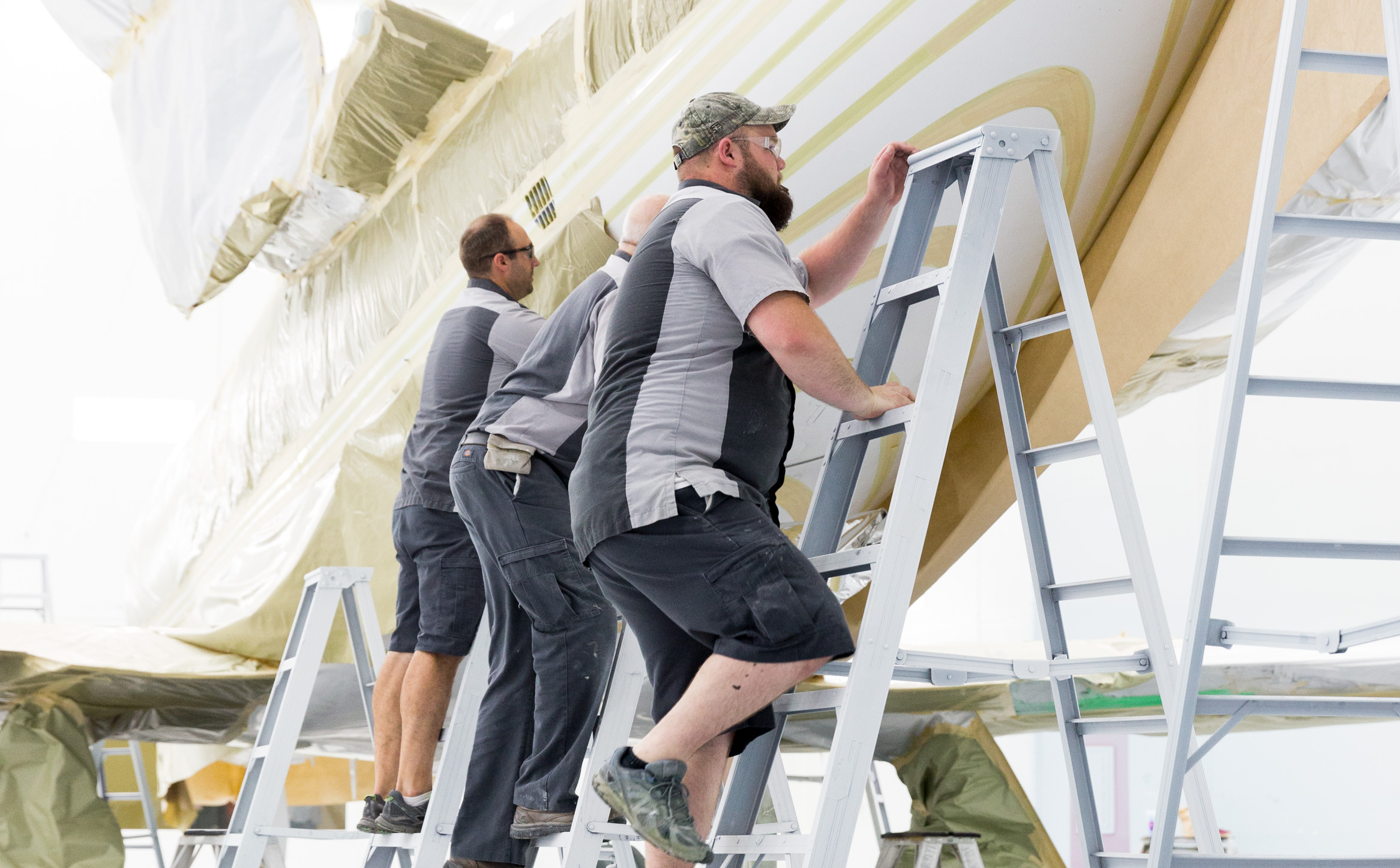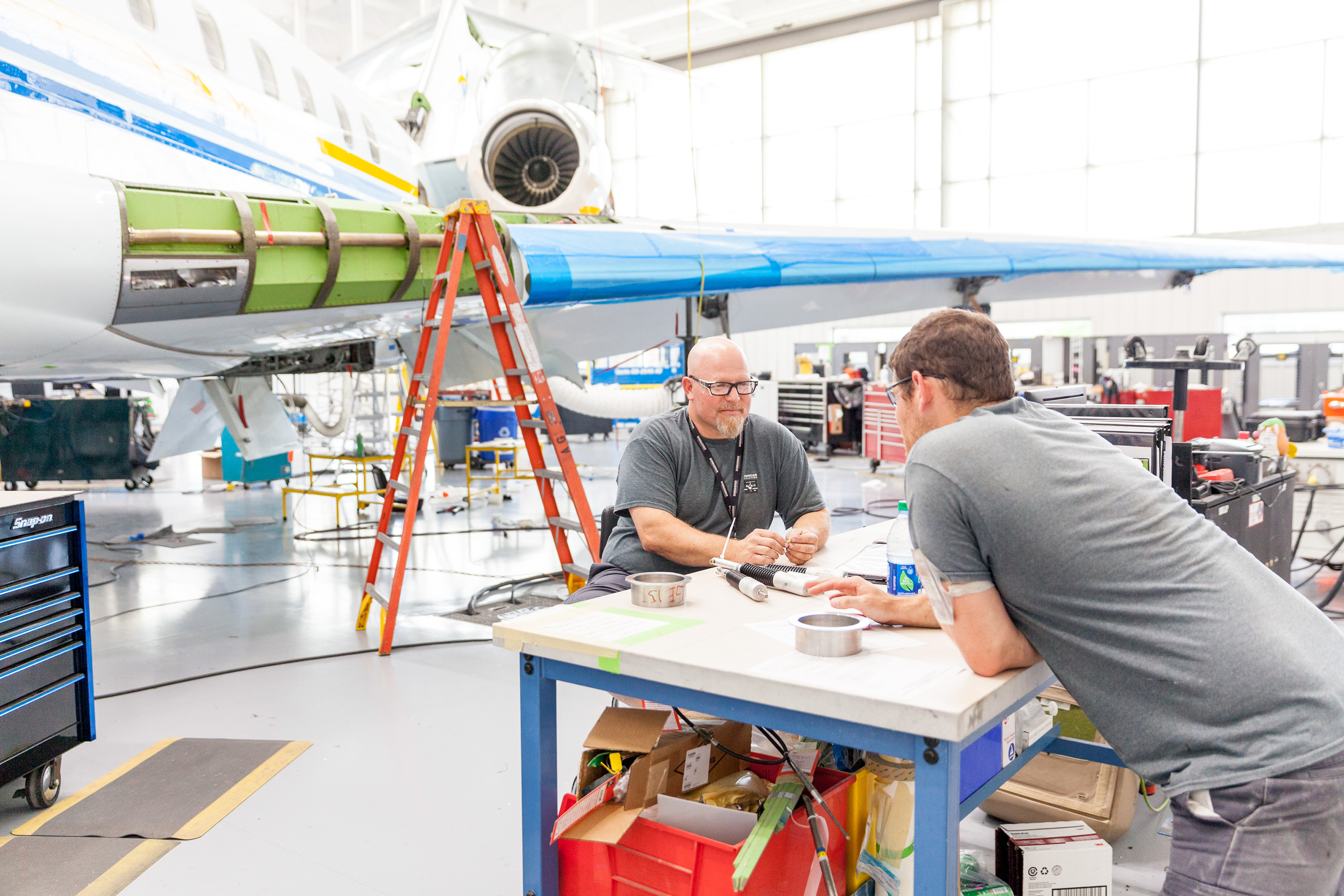
Oct. 22, 2018
Aircraft refurbishment is like a jigsaw puzzle in which the pieces must come together in a specific sequence.

Andrew Kiehl, vice president for maintenance at Executive Jet Management, is sending a 16-year-old Gulfstream V to the shop for its 192-month inspection. This will be a big one. The interior will be completely torn out. The aircraft will be repainted. The process will take weeks.
Kiehl sees it as a perfect opportunity. “The plane will be nothing but a tube,” he explains. “If you’re going to do any improvement to the interior, now is the time.”
Kiehl, whose company operates more than 200 air-craft, directly supervises the maintenance on a third of them. With that many aircraft to care for, he has come to know a thing or two about cabin and cockpit refurbishment. The message he preaches is simple: it takes time and a tremendous amount of detailed planning to get the job done.
PLANNING AHEAD ESSENTIAL
For Kiehl and his counterparts at flight operations worldwide, heavy refurbishment becomes an exercise in detail. The myriad of items on the refurb agenda include much more than paint samples and leather swatches. The planning process alone is exhaustive and time-consuming, he says.
“A project like this [Gulfstream V] could take between nine and 12 months just to plan,” he says. Each of his company’s three maintenance teams includes planning staff members who coordinate a delicate ballet of tasks, providers and aviation department needs, as well as specific inspection and service requirements for each individual airplane in the fleet.
One of the first tasks for Kiehl and his staff is to look at the calendar. What must be done to the aircraft now? What else can be done while it is in the shop? What is the next maintenance task? Can any of these items be combined to save money and downtime?
“We created a dashboard in-house,” Kiehl explains. “We set a date to tackle the driving issue. In the case of our GV, that 192-month inspection was due Aug. 31. That tells you to start work the previous October.”
By planning that far in advance, Kiehl and is able to combine the inspection with a complete refit of the aircraft interior, along with a new paint job.
Refurbishing the cabin of a business aircraft is “not just carpet and seats,” according to Jon Haag, president of Haag Aviation Services and a member of the NBAA Maintenance Committee. A cabin refurb means updating the cabin management system (CMS) and improving connectivity with a new satcom system, he says. Then come the new seats and carpet.
Haag points out that there is an important distinction between the time it takes to complete a refurbishment project and the time a vendor has available to do the work. Since multiple vendors are often involved, the task becomes much more complicated. It is a jigsaw puzzle, says Haag, and every aspect must fit precisely with the next in both sequence and duration.
Kiehl concurs. “Forward planning becomes even more vital when you have to do anything with the aircraft’s wiring or electronics.” The industry’s current push to comply with ADS-B 2020 requirements means shops are not only full, but in many cases, they are booked months in advance.

SATISFYING THE END USER
Of course, all of the refurbishment work must be done to the specifications of the aircraft owner or principal.
“Communication is huge,” says Haag. “It starts the day the principal says, ‘You know, I want to update the airplane.’”
As the key person in that process, Haag finds himself communicating both upstream and downstream, and in each case, a large part of that process is managing expectations. The principal has a vision for the refit, which might include specific fixtures and systems, colors and materials.
One of the very first steps, says Kiehl, is under-standing what the principal expects to accomplish with the refurbishment. Along with system specifications for satcom and CMS, that often includes the presentation of “color boards,” as well as paint, cloth, leather and carpet samples.
“However, a lot of the more advanced completion centers now offer a digital rendering of the aircraft cabin – a computer-generated visual that is a big help in helping decision-makers see what they’re getting,” he adds.
SPECIFIC DETAILS AND THE HIGH COST OF CHANGES
Haag uses a checklist of his own to manage this complicated process. Kiehl uses sophisticated planning soft-ware. Both are dedicated to obtaining highly detailed quotes from their respective vendors that describe the job, line item by line item.
“I send the project out to quote with three or four vendors,” says Haag. “I do that for a number of rea-sons. I need to find a time slot that works. I want to make sure we’re talking apples-to-apples, and I want to compare costs.”
The winning quotes become roadmaps, complete with tasks, costs and timelines. Each of those timelines has a set of milestones.
Throughout the process, both Kiehl and Haag say it’s absolutely crucial to remain personally involved. Together with project milestones, constant personal oversight ensures there are no surprises and minimizes the need for change.
Change in the middle of a cabin refurbishment is often fraught with both cost and concern, another reason for careful planning before the aircraft goes into the shop.
“When you do a change order, you have to realize it’s going to cost a fair amount of money,” Haag warns. “A change in midstream usually means we have to go back several steps, and that’s when it gets expensive.”
At the end of the project, Kiehl says, leave time to test fly the airplane and make adjustments, if needed. Inspect the paint for runs. Make sure cabinets fit snugly, and that doors and drawers close properly in flight. Listen for squeaks and pops. Kiehl actually takes shop employees on shake-down flights to fix minor squawks right then and there.
“The aircraft has spent a lot of time on the ground, and that’s not good. It wants to fly,” says Kiehl. “So, take it up at the end of the refurb and make sure you’re thorough, because things work differently once you’re up in the air.”


 International Business Aviation Council Ltd.
International Business Aviation Council Ltd.